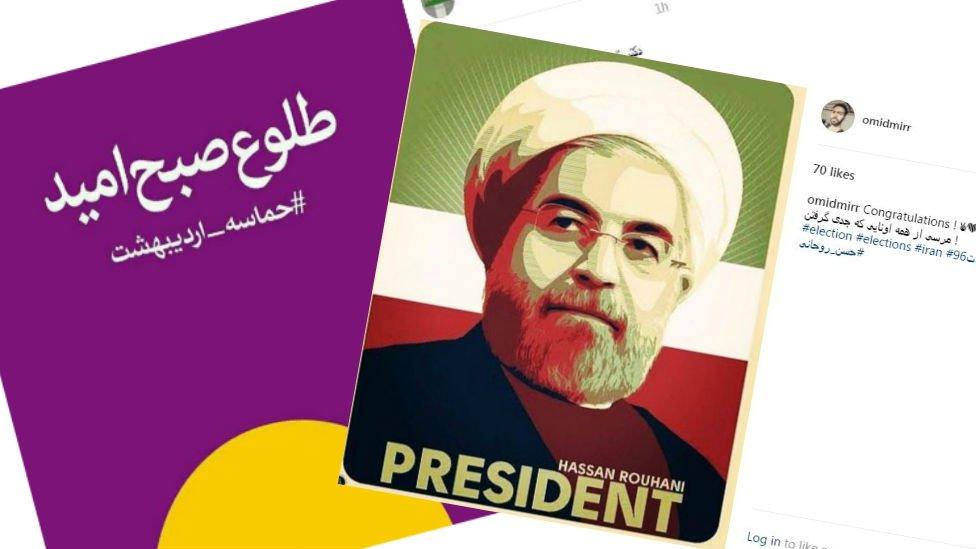Iran protests continue for a third day despite warnings
- Published
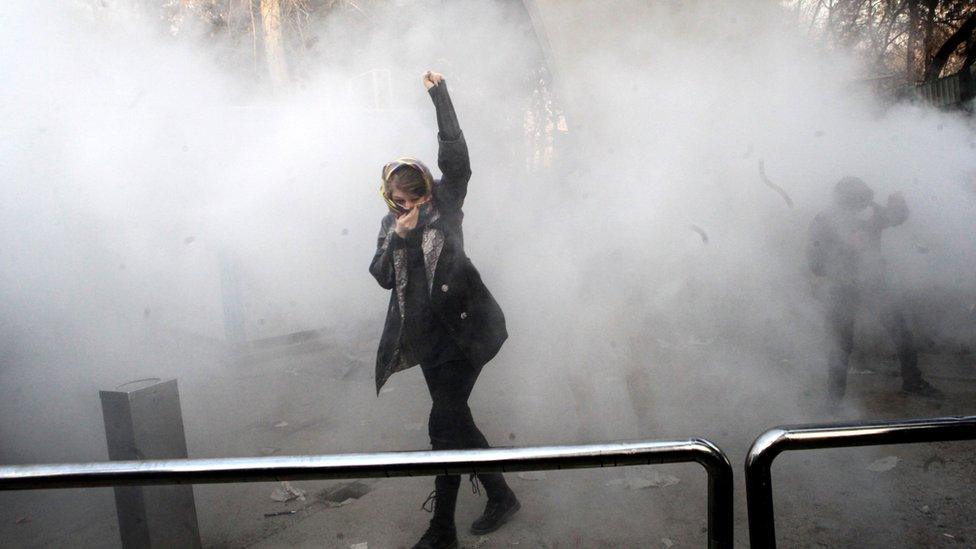
Protesters clashed with police at Tehran University
Anti-government protests have continued in Iran for a third day, with reports of demonstrations in many cities despite warnings from authorities.
At Tehran University, protesters called for Supreme Leader Ayatollah Ali Khamenei to step down and there were clashes with police.
Demonstrators ignored the interior minister's warning that citizens should avoid "illegal gatherings".
Meanwhile, thousands of pro-government demonstrators turned out for rallies.
These official rallies were organised in advance of the anti-government protests, to mark the eighth anniversary of the suppression of major street protests in 2009.
The current protests began in the north-east on Thursday over living standards and by Friday had spread to several major cities.
Iranian state TV showed crowds of government supporters in the capital, Tehran
Interior Minister Abdolreza Rahmani-Fazli urged people not to take part "as they will create problems for themselves and other citizens", but videos posted online suggest that protests were held on Saturday in at least nine cities across the country.
The Iranian authorities are blaming anti-revolutionaries and agents of foreign powers for the outbreak of protests. The communications minister has also urged Telegram, a popular mobile messaging app in Iran, to stop "promoting violence".
In the US, the Trump administration warned Iran overnight that the world was watching its response. Iran's foreign ministry called the comments "opportunistic and deceitful".

'An eye-opening three days'
By BBC Persian correspondent Kasra Naji
Although small, the anti-government protests on Saturday took on a much greater importance than the government-sponsored rallies.
It's not every day that there are thousands of people voicing opposition to the government.
As night fell, reports were still coming of protests in many cities. There have been clashes with the police in some places.
The common factor in all of them has been protesters' demand for an end to clerical rule in Iran.
Widespread discontent is not limited to complaints about rising prices or widespread unemployment.
It has been an eye-opening three days for the government, which has been careful not to provoke the protesters too much.

How did the anti-government demonstrations start?
The protests started in the north-eastern city of Mashhad - the country's second most-populous - on Thursday.
People there took to the streets to express anger at the government over high prices, and vented their fury against President Hassan Rouhani. Fifty-two people were arrested.
Protesters take to streets venting anger against authorities
The protests spread to at least half a dozen cities on Friday. In some cities police in riot gear and on motorbikes clashed with demonstrators.
It is the biggest display of public dissent since huge pro-reform rallies in 2009.
Overall, the numbers said to be taking part range from less than 100 in some places to thousands in others - but demonstrations do not appear to be taking place on a massive scale. Information about them has mostly emerged through social media.
A video that spread among Persian-language Twitter users earlier on Saturday showed students at Tehran University calling for Mr Khamenei to step down.
Allow X content?
This article contains content provided by X. We ask for your permission before anything is loaded, as they may be using cookies and other technologies. You may want to read X’s cookie policy, external and privacy policy, external before accepting. To view this content choose ‘accept and continue’.
The hardline Fars news agency tweeted that "opportunists" were trying to raise unrest in front of the university. However AFP news agency reported that pro-regime counter-demonstrators appeared to outnumber them and chanted "death to the seditionists".
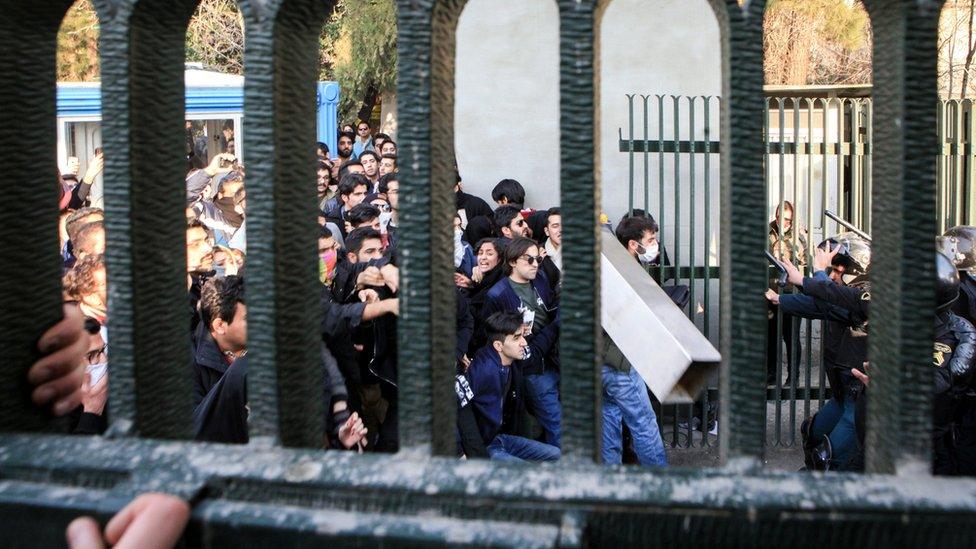
The scene earlier at Tehran University
Many videos have emerged online showing protests said to have been held on Saturday in cities across Iran, including Karaj, Arak, Zanjan, Khorramabad, Shiraz and Bandar Abbas, BBC Monitoring reports.
What is Iran saying about the protests?
First Vice-President Eshaq Jahangiri has suggested that government opponents are behind the protests, state broadcaster IRIB reports.
He said: "Some incidents in the country these days are on the pretext of economic problems, but it seems there is something else behind them. They think by doing this they harm the government, but it will be others who ride the wave."
Officials in Mashhad said the protest was organised by "counter-revolutionary elements", while state-run Channel One says "some opportunists tried to make British, American and Saudi media happy with norm-breaking slogans".
Its report added however that "the economic problems of the people are undeniable" - a sentiment echoed by some officials.
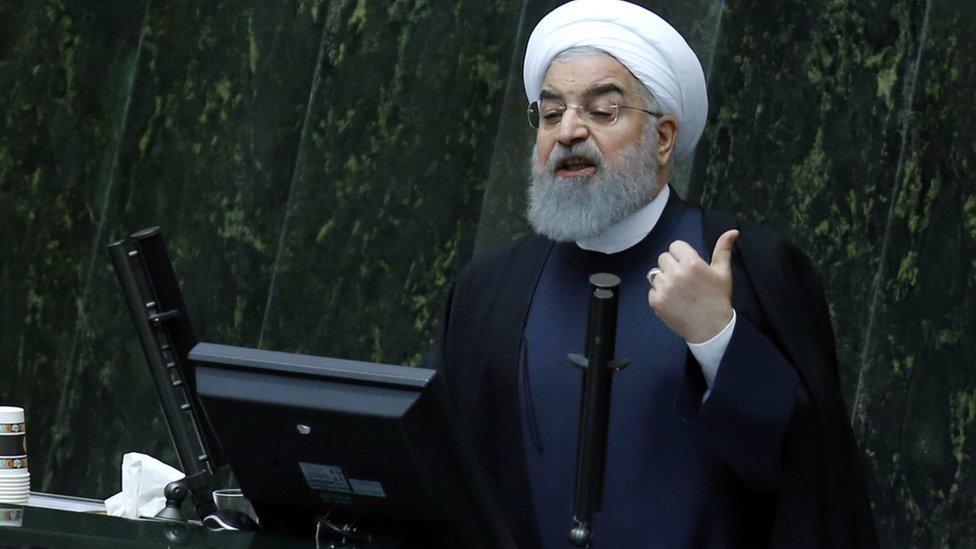
President Hassan Rouhani is blamed by many for the poor state of the economy
What was the US response?
"The Iranian government should respect their people's rights, including their right to express themselves. The world is watching," White House spokeswoman Sarah Huckabee Sanders said on Twitter.
The same tweet later appeared on President Donald Trump's Twitter account.
Allow X content?
This article contains content provided by X. We ask for your permission before anything is loaded, as they may be using cookies and other technologies. You may want to read X’s cookie policy, external and privacy policy, external before accepting. To view this content choose ‘accept and continue’.
The US State Department urged all nations "to publicly support the Iranian people and their demands for basic rights and an end to corruption".
What is behind the unrest?
The protests were initially against economic conditions and corruption but appear to have turned political.
Slogans have been chanted against not just Mr Rouhani but Mr Khamenei, and clerical rule in general.
Demonstrators were reportedly heard yelling slogans like "The people are begging, the clerics act like God". Protests have even been held in Qom, a holy city home to powerful clerics.
There is also anger at Iran's interventions abroad. In Mashhad, some chanted "not Gaza, not Lebanon, my life for Iran", a reference to what protesters say is the administration's focus on foreign rather than domestic issues.
Other demonstrators chanted "leave Syria, think about us" in videos posted online. Iran is a key provider of military support to the government of Bashar al-Assad in Syria.
It is also accused of providing arms to Houthi rebels fighting a Saudi-led coalition in Yemen, which it denies, and is an ally of Lebanon's powerful Shia movement Hezbollah.
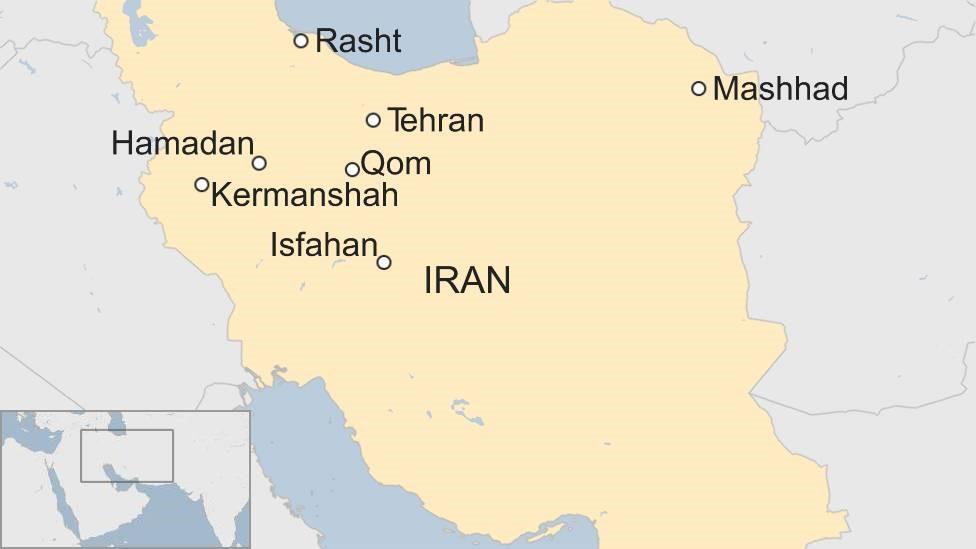
Protests took place in at least half a dozen cities
- Published29 December 2017

- Published28 December 2017
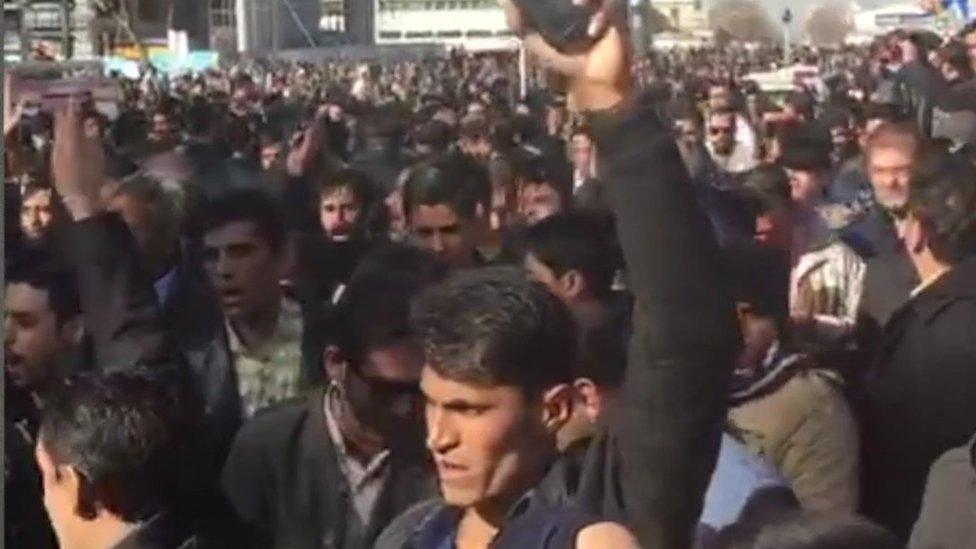
- Published20 September 2017
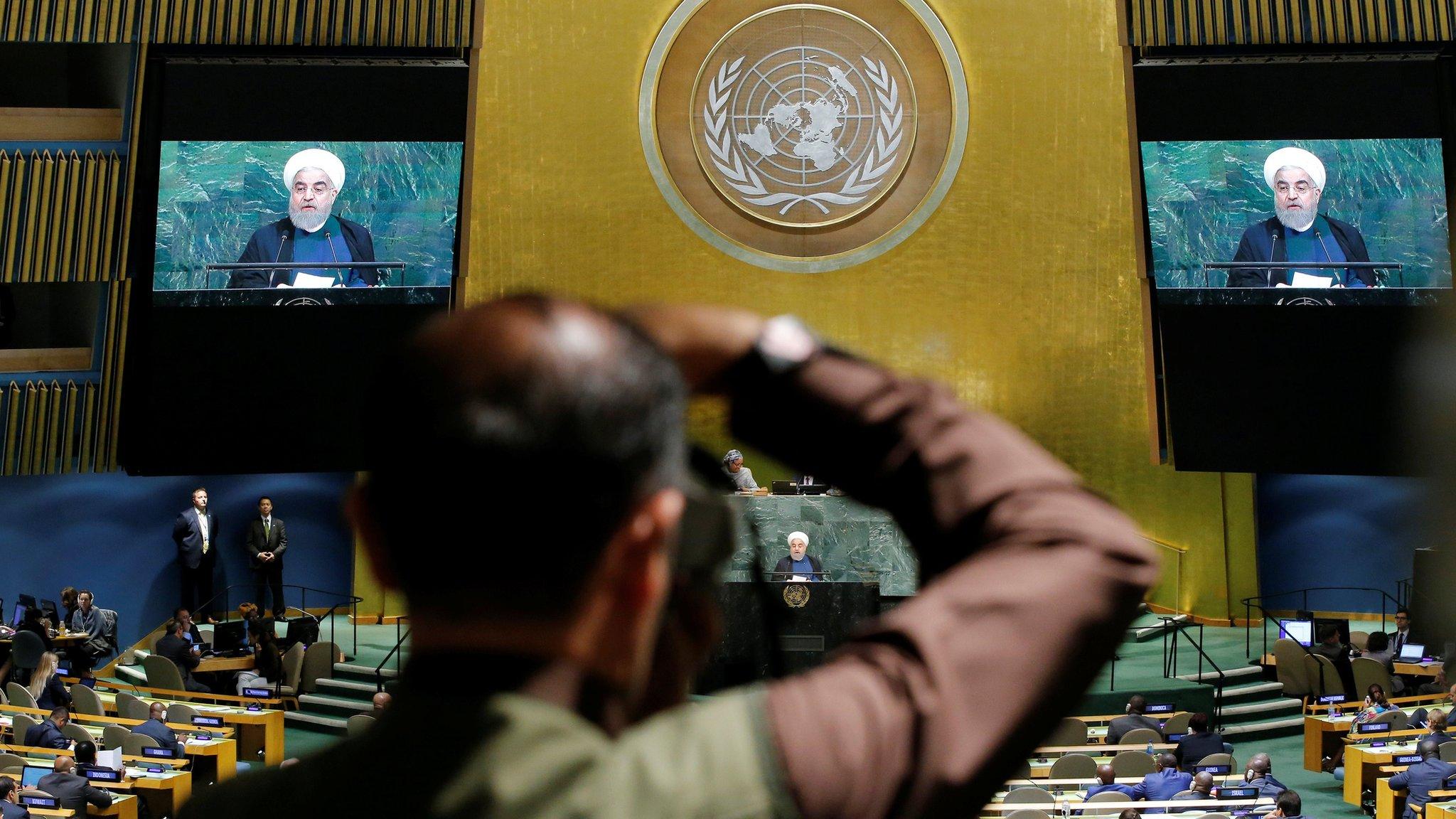
- Published20 May 2017
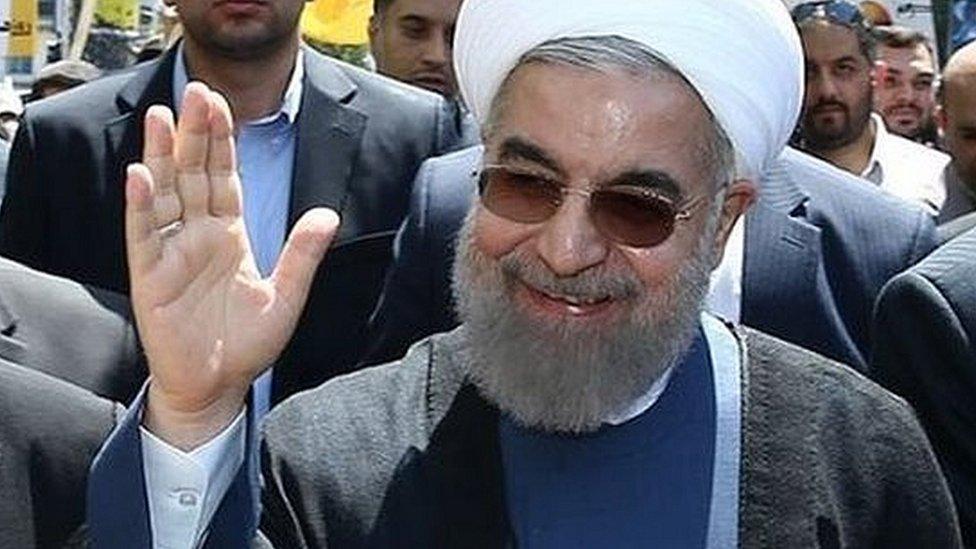
- Published20 September 2017

- Published20 May 2017
